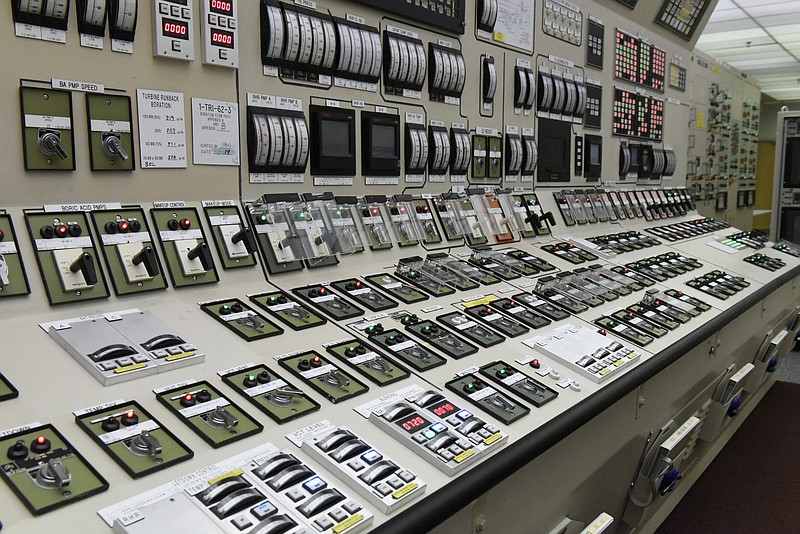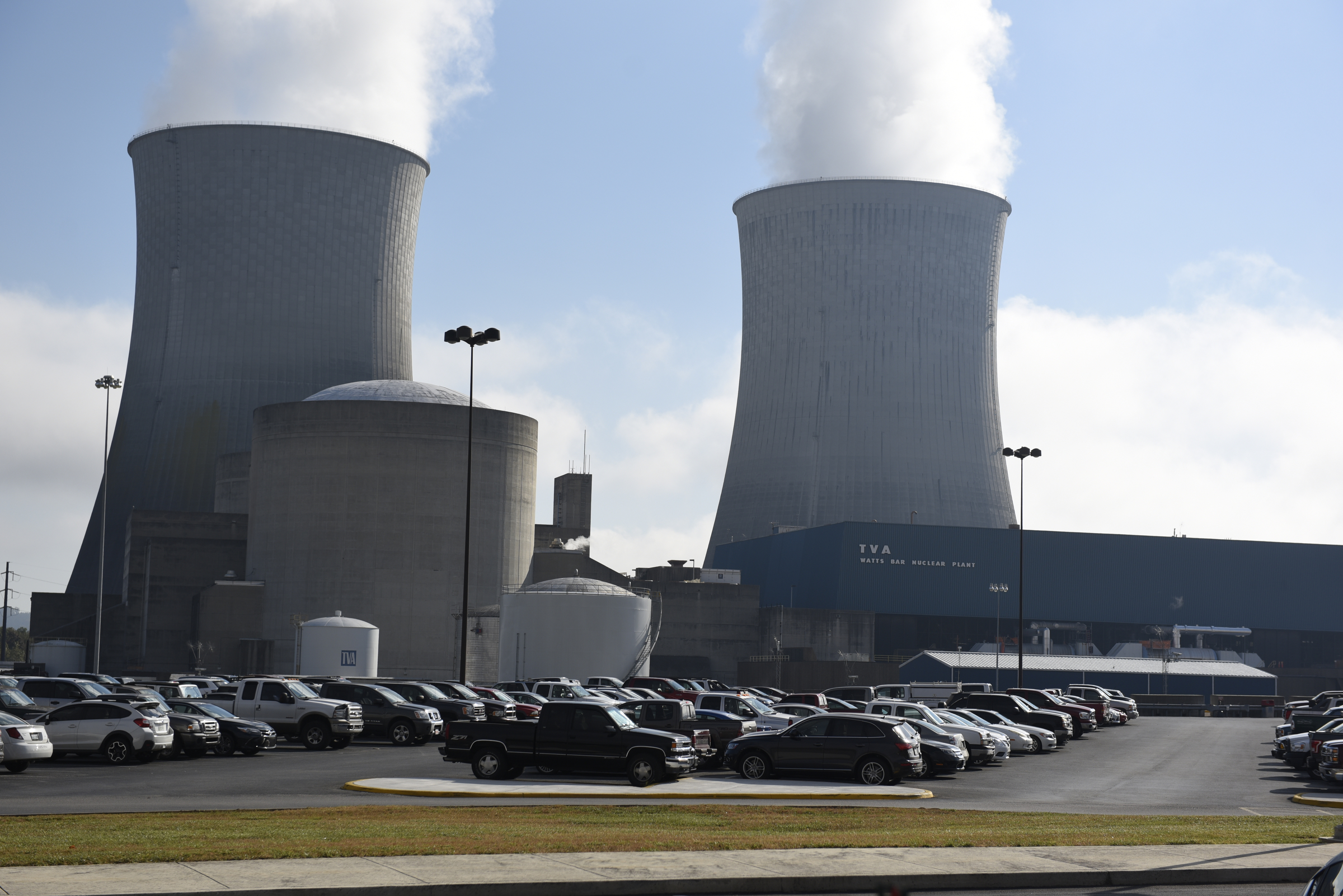The Tennessee Valley was powered this week by a record amount of electricity generated from splitting atoms.
With TVA's newest nuclear unit at the Watts Bar Nuclear Plant reaching 100 percent power this week, the seven reactors in the TVA fleet accounted for more than 40 percent of TVA's power generation this week for the first time in TVA's 83-year history.
The Watts Bar Unit 2 reactor reached full power after TVA restarted the new unit on Monday following a four-week outage caused by a fire at one of the main transformer's in the Watts Bar switch yard last month, TVA spokesman Jim Hopson said Friday. TVA is continuing power ascension tests of the new reactor at Watts Bar, which is the first new reactor to be added to America's electric grid in more than two decades.
TVA must operate the new reactor for 20 consecutive days at full power and complete a series of tests before it is declared a commercial nuclear unit and is brought into TVA's rate base.
TVA had budgeted last year for the unit to be operational by the end of June, but final tests of the equipment delayed the startup. Then on Aug. 30, a fire in a switch yard transformer forced the unit to be idled and the transformer replaced. The damaged transformer is critical for TVA to distribute the 1,150 megawatts of electricity generated by each of the two Watts Bar units.
"Watts Bar personnel followed a rigorous and detailed process to inspect, repair and test the transformer before returning it to service, ensuring that it performs safely and reliably as designed," Hopson said. "The Watts Bar team will now continue with power ascension testing, with several key tests remaining in the program. Following testing completion the unit will commence a pre-commercial reliability run."
But even before the unit is declared a commercial reactor, the new Watts Bar reactor joined with other units at TVA's Sequoyah, Browns Ferry and Watts Bar nuclear plants to generate more than 8,000 megawatts of power during times this week.
TVA's oldest reactor, the Unit 1 reactor at the Browns Ferry in Alabama, is reducing its power output as it approaches a refueling outage, Hopson said.
TVA began building nuclear power plants in the 1960s when power demand was growing nearly 7 percent a year and the federal utility once planned to build 17 reactors across its 7-state service territory.
The Tennessee Valley Authority began building Watts Bar in 1973 but work on Unit 2 was suspended in 1988 when Unit 2 was estimated to be 80 percent complete. TVA suspended work at Watts Bar and other units due to a drop in power demand and an increase in nuclear construction costs.
TVA directors later voted in 2007 to restart work the unfinished Unit 2 reactor at Watts Bar. At that time, TVA projected the unit could be finished in five years for $2.5 billion, but the work ultimately took nine years and cost about $4.7 billion.
TVA, which begins its fiscal year today, will begin to amortize that debt once the unit is declared commercial , adding more than $200 million a year to TVA's annual budget costs, according to TVA Chief Financial officer John Thomas.
Despite the additional debt service charges for TVA with the new reactor coming into the rate base, the new reactor will help TVA meets its goal of generating more than half of its power from non-carbon sources by 2020. TVA operates 29 hydroelectric dams and is buying more wind and solar power as well as encouraging more energy conservation.
A study released this week by the consulting firm of the Horinko Group for the pro-nuclear advocacy organization Nuclear Matters estimates that U.S. nuclear plants will save about $85 billion a year worth of carbon-abatement value by 2020 in meeting the carbon reduction targets set in EPA's Clean Power Plan.
TVA projects its future power demand will be relatively stable but it is using the new nuclear plant to make up for power previously generated by 18 coal-fired units TVA has or soon will shut down.
The slower growth in the demand for electricity led TVA scrap plans in the 1980s to finish building its Hartsville and Phipps Bend nuclear plants in Tennessee and its Yellow Creek nuclear plant in Mississippi.
Earlier this year TVA finally decided to also give up on its Bellefonte nuclear plant. TVA plans to sell the site of the twin-reactor Bellefonte plant in Alabama later this month.
Contact Dave Flessner at dflessner@timesfreepress.com or at 423-757-6340.

